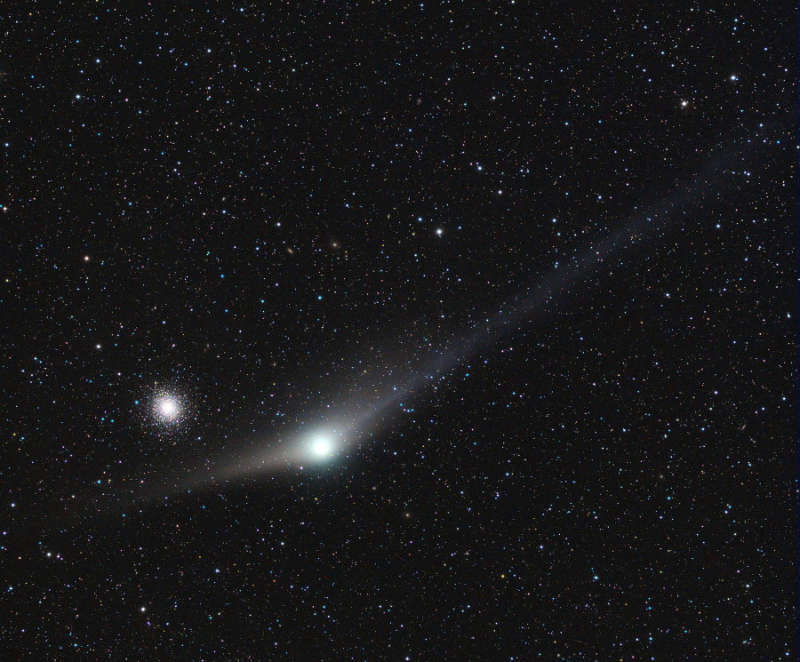Credit & Copyright: Rolando Ligustri
(CARA Project,
CAST)
Explanation:
Sweeping slowly through the constellation Hercules,
Comet Garradd (C2009/P1) passed with about 0.5 degrees of
globular
star cluster M92 on February 3.
Captured here in its latest
Messier moment, the
steady performer remains just below naked-eye
visibility
with a central coma comparable in brightness to
the dense, well-known star cluster.
The rich telescopic view from New Mexico's,
early morning skies, also features Garradd's broad
fan shaped dust tail and a much narrower ion tail that
extends up and beyond the right edge of the frame.
Pushed out by the pressure of sunlight, the dust tail
tends to trail
the comet along its orbit while
the ion tail,
blown by the solar wind, streams away from the comet in
the direction opposite the Sun.
Of course, M92 is over 25,000 light-years away.
Comet Garradd is 12.5 light-minutes
from planet Earth, arcing above
the ecliptic plane.
1999 2000 2001 2002 2003 2004 2005 2006 2007 2008 2009 2010 2011 2012 2013 2014 2015 2016 2017 2018 2019 2020 2021 2022 2023 2024 2025 |
Yanvar' Fevral' Mart Aprel' Mai Iyun' Iyul' Avgust Sentyabr' Oktyabr' Noyabr' Dekabr' |
NASA Web Site Statements, Warnings, and Disclaimers
NASA Official: Jay Norris. Specific rights apply.
A service of: LHEA at NASA / GSFC
& Michigan Tech. U.
|
Publikacii s klyuchevymi slovami:
Messier catalog - comet - comet tail - komety - katalog Mess'e
Publikacii so slovami: Messier catalog - comet - comet tail - komety - katalog Mess'e | |
Sm. takzhe:
Vse publikacii na tu zhe temu >> | |
